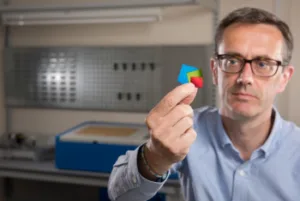UK-based advanced displays company Bodle Technologies Limited announced today it has achieved a key milestone for bringing its Solid State Reflective Display (SRD) technology to market.
Bodle Technologies founder Harish Bhaskaran said: “We have achieved reflective specifications for the three primary colours required for manufacture of the core optoelectronic films in our Solid State Reflective Display technology.
“Bodle’s CTO, Peiman Hosseini and his team have hit this technical goal very quickly. This showcases the capabilities of the technology and also demonstrates the high quality of our technical team.”
A University of Oxford spinout, Bodle Technologies was launched in November 2015.
As well as enabling ultra-high resolution colour displays which will be easy to read or view in bright sunlight, Bodle’s “pixels of the future” will allow low-energy, rich-colour and flexibility well beyond any existing reflective displays. Bodle displays will offer:
1. Vivid colour
Bodle pixels will allow e-readers, wearables and other screen-based technologies to offer magazine-quality glossy colour displays. The strong interference effect harnessed by Bodle’s SRD pixels create this quality by reflecting ambient light.
2. Bright white
Bodle’s SRD pixels will allow vivid colours to be displayed alongside neutral colours. Current technologies can’t achieve this and Bodle’s technology will be the first to offer this feature.
3. Low-energy or no-energy
SRD pixels are bistable, requiring only small amounts of energy to change state, and none to retain their current switched state indefinitely.
4. Visible in bright sunlight
With no backlight or self-illumination, SRD pixels become brighter and more vivid as the ambient brightness increases. This is the opposite of the “wash-out” effect which plagues mobile phone users and other display technologies.
5. Paper-thin, flexible displays
The pixels themselves are only tens of nanometres thick and the SRD fabrication procedure is completely compatible with flexible substrates.
6. Scalability across display resolutions
Nanoscale lateral dimension pixels means full images smaller than a conventional display’s individual pixels. But the Bodle SRDs will also be capable of switching pixel regions on the scale of current high-resolution displays.
Bodle is featured in the University of Oxford’s #StartedinOxford campaign this week: http://www.ox.ac.uk/research/started-in-oxford

